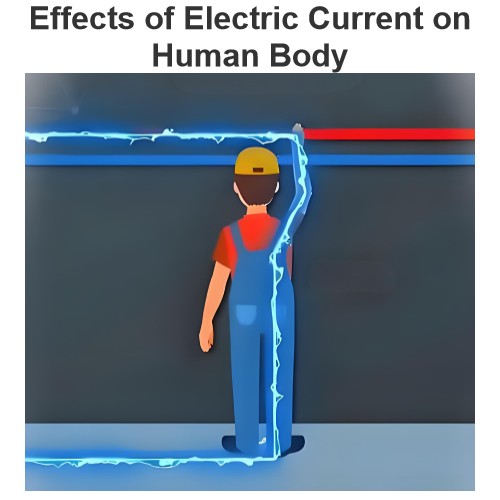What are the two main hazards that may arise in faulty electrical equipment?
Electrical equipment failures may cause the following two main dangers:
I. Danger of electric shock
Direct contact electric shock
When an electrical equipment fails, such as when insulation is damaged and wires are exposed, if a person accidentally touches the live part, direct contact electric shock will occur. For example, if the insulation of a motor is punctured and the motor casing is live, and an operator touches the casing, the current will flow through the human body into the ground, causing an electric shock accident.
In this way of electric shock, the human body directly contacts the parts that are live during normal operation. The current path is usually from the contact point of the human body through the body to the ground or other places with lower potential. The degree of danger depends on factors such as the contact voltage, the human body resistance, and the current path through the human body. Generally, when the power frequency current passing through the human body exceeds 10mA, it may cause muscle spasms in the human body and it is difficult to get rid of the live body; when the current reaches several tens of milliamperes, it may cause respiratory paralysis and even cardiac arrest.
Indirect contact electric shock
This is electric shock caused by the exposed conductive parts becoming live due to electrical equipment failures. For example, if the insulation of a certain phase of the equipment is damaged and the metal casing of the equipment becomes live, when a person touches this live casing, indirect contact electric shock will occur.
In this way of electric shock, the human body contacts parts that are normally not live. Because of electrical equipment failures, these parts become live. Usually, because the fault current makes the originally safe parts such as equipment casings live through grounding devices, etc., the human body becomes part of the current path after contact. In a TT system (a system where the neutral point of the power supply is directly grounded and the exposed conductive parts of electrical equipment are grounded separately), if a grounding fault occurs in the equipment, the fault current forms a circuit through the protective grounding resistance and the human body resistance, which will cause harm to the human body.
II. Danger of fire
Fire caused by overload and heat generation
When electrical equipment malfunctions, such as short circuits and overloads, it will cause excessive current. According to Joule's law (Q = I²Rt, where Q is heat, I is current, R is resistance, and t is time), when current passes through the conductor part of electrical equipment, a large amount of heat will be generated.
For example, in a circuit with aging wires and degraded insulation performance, if too many electrical appliances are connected, overload will occur. Excessive current will cause the wires to heat up. If the heat cannot be dissipated in time, the temperature of the wires will continue to rise. When the temperature reaches the ignition point of the surrounding combustible materials, a fire will be triggered. Generally, insulation materials such as polyvinyl chloride for wires will soften and decompose at high temperatures, further increasing the fire risk.
Fire caused by arcs and electric sparks
Electrical equipment failures may generate arcs and electric sparks. For example, in the process of opening and closing the contacts of switching equipment, if the contacts are not in good contact, arcs are easy to occur. Electric sparks may also be generated between the motor brush and commutator due to reasons such as wear and poor contact.
Arcs and electric sparks have very high temperatures and can instantly ignite the surrounding combustible materials. For example, in an environment containing combustible gases or dust, these arcs and electric sparks may cause explosions and fires. Moreover, once a fire occurs, the plastic, rubber and other insulation materials in electrical equipment will burn and produce toxic and harmful gases, further endangering life safety.
The Electricity Encyclopedia is dedicated to accelerating the dissemination and application of electricity knowledge and adding impetus to the development and innovation of the electricity industry.













